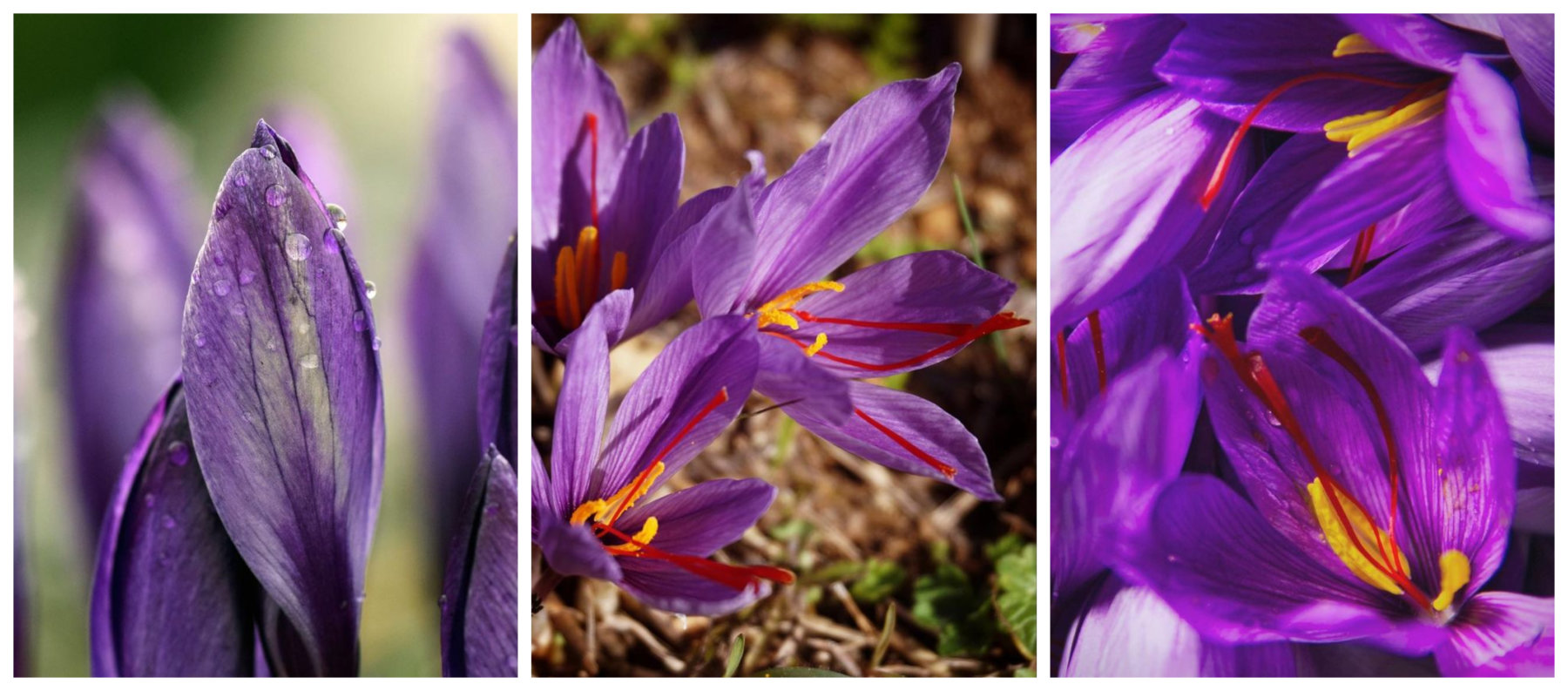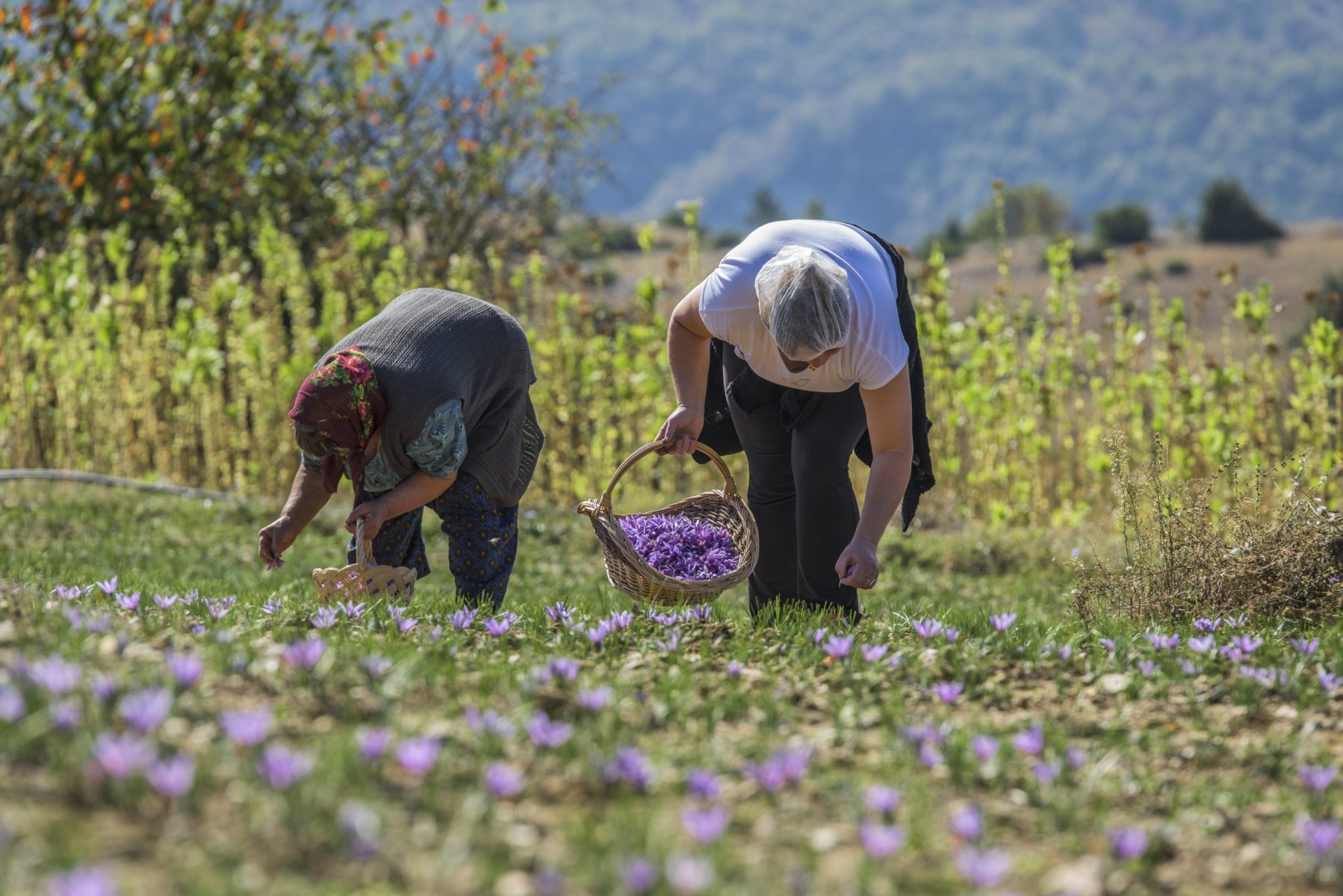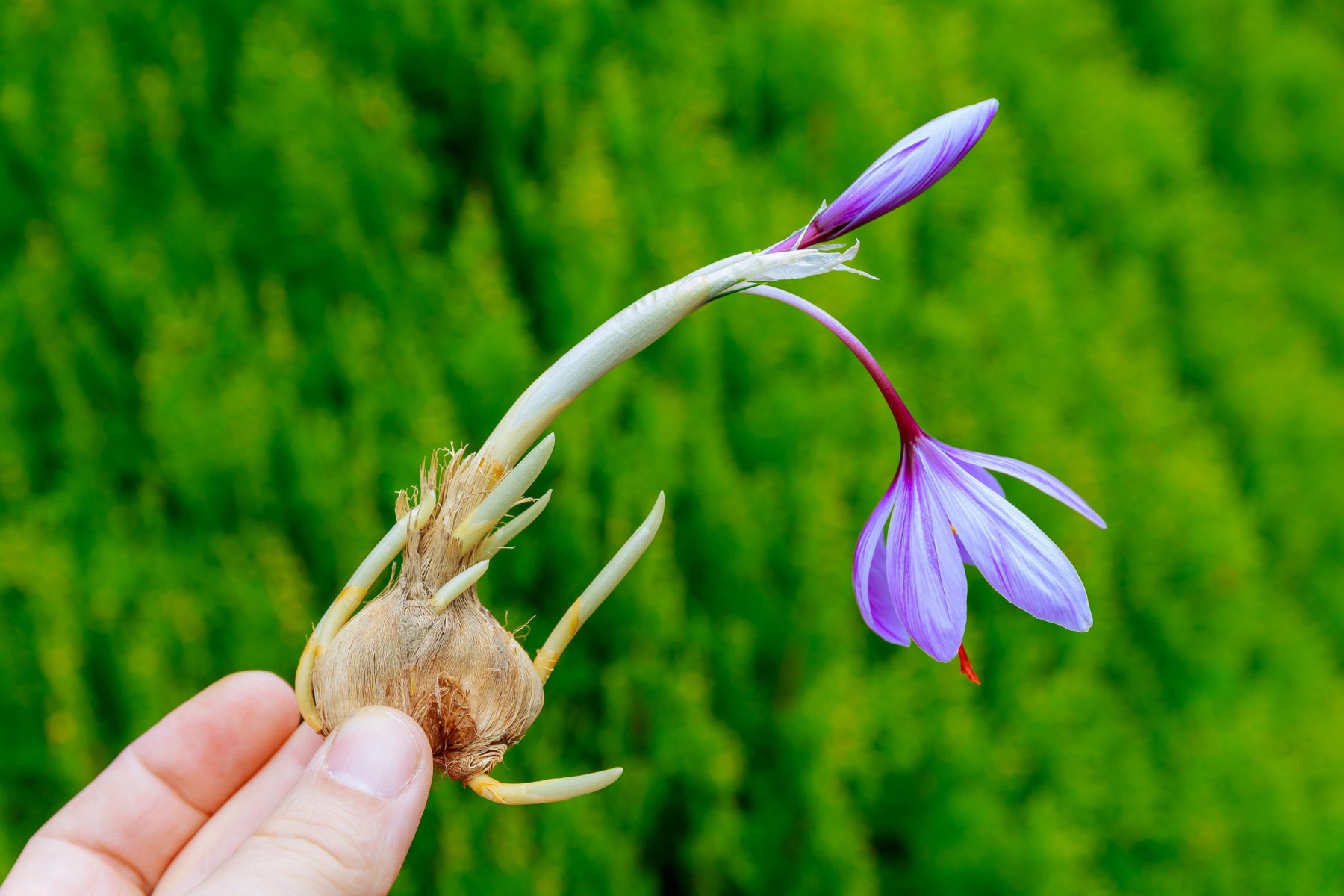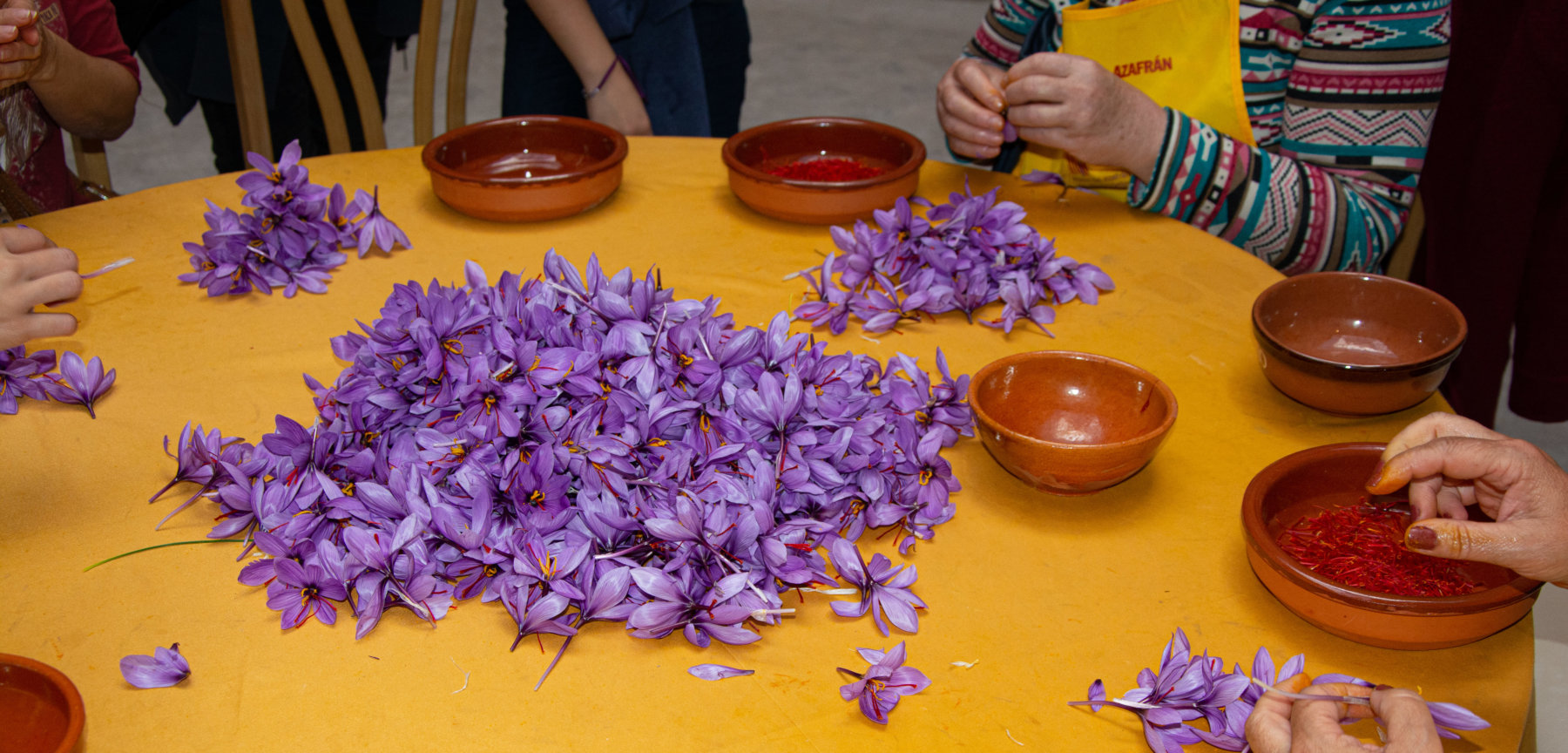A small, uneven fungus that packs such an aromatic punch and is considered globally as a prized, luxury ingredient. Ever wondered how truffles grow and where you can find them? Luxeat recently spent some time exploring the north west of Italy and sat down with a truffle-hunting family with a legacy of four generations behind them, harvesting this rare and unique product.
Saffron harvesting
There is one ingredient that stands out more than any other in our search for the top ingredients in the world. Saffron. The most majestic of all spices has a four thousand-year history that spans numerous cultures, countries, and civilizations and is valuable as gold.
Saffron originated from the flower of Crocus sativus, sometimes referred to as the “saffron crocus.” The vivid red stigma and styles, which are also referred to as “threads,” are picked and dried principally for use as food flavoring and coloring. Iran is thought to be the origin of saffron, however the precise location is still unclear. Although, it has also been argued that this plant might have its origins in Greece and Mesopotamia. Before being introduced to parts of North Africa, North America, and Oceania, the saffron crocus gradually expanded across much of Eurasia.

WHEN CAN SAFFRON BE HARVESTED?
Everywhere it grows in the world, saffron is always collected in the autumn. In some places, it is typically harvested in October and February, after the wine harvest and just before the olive harvest occurs. After planting the corms mostly in June, the stem, leaves and root develop between October and February. Its brilliantly colored flowers appear only in October, after most other flowering plants have released their seeds; they range from a light pastel shade of lilac to a darker mauve purple. The flowers have a pleasant scent. The plants can grow up to 30 cm tall and bear up to four flowers when they flower.
The grown flowers are only viable for 3-4 days to 2 weeks in some areas, and they must be discarded if not harvested on time and correctly. It flowers for 20 to 25 days on average.
Only until noon or after sunset that harvesters can you pick flower blossoms as they bloom with the sunrise because much later and the light would have wilted the flowers, making them unusable to harvest.

THE HARVESTING PROCESS
Bloomed in the most gifted lands, saffron is harvested by the original farmers with a mastery skills passed down for generations.The majority people seen gathering the blooms are women. Because of the hard and unforgiving environment, picking saffron requires bending over with your pelvis tilted and your legs apart. Women may hold that position for a longer amount of time than men because they are better genetically suited to work in such conditions and are more resistant to stress.
Having a limited time to pick flowers during only few days, of not weeks each year, and considering how fragile and sensitive the saffron flower is, makes it very harsh. And that is why almost 90% work force of this industry especially the process of flower picking are women, due to their bone structure and higher muscle resistance to fatigue resulting in longer performance during the intense process of harvest.
I can confidently say, that throughout the history, if it was not because of women, there wouldn’t be any organized saffron cultivation ever.
Daniel Salim, founder of Khan Saffron
Additionally, the limited time to pick flowers during only few days, of not weeks each year, and considering how fragile and sensitive the saffron flower is, makes it very harsh. And that is why almost 90% work force of this industry especially the process of flower picking are women, due to their bone structure and higher muscle resistance to fatigue resulting in longer performance during the intense process of harvest. I can confidently state that if it hadn’t been for women, there would have been no organized saffron cultivation throughout history.

WHY IS SAFFRON SO EXPENSIVE
Its harvesting is what causes it to be expensive. Each saffron flower is only used in limited quantities, and all harvesting must be done by hand.
Only three stigmata are present in each saffron flower. The stigmata are dried to maintain their color and flavor after being cut from the plant (together with their crimson pistils). 1 gram of good quality saffron requires 150 – 250 Flowers and one pound of saffron spice generally requires 75,000 saffron flowers because only a little portion of the blossom is actually used. Due to the limited amount of saffron spice produced per plant and the labor-intensive manual harvesting process, saffron is very expensive.
BENEFITS OF SAFFRON
Saffron is utilized in a variety of goods around the world, including food, medicine, and cosmetics.
It has incredible anti-inflammatory qualities and is a potent aphrodisiac, increasing libido to incredible heights. According to research that have been documented in numerous authoritative medical sources, one of the most important discoveries about the advantages of saffron in recent times is that it reduces the growth of cancer cells.

The way it treats human skin is another intriguing characteristic. It functions as a specific magical elixir for everything from freckles to acne to skin darkness. I could list a lot more benefits, such as relief from high blood pressure and hair loss. It also works well as an antidepressant.
Challenges of Saffron Production
Although, the spice is a source of pride and has supported the economic and culture of several Countries for ages. However, due to insufficient irrigation systems, climate change, and the importation of less expensive saffron from abroad, its cultivation has become more difficult over time. Some region’s unrest has also affected its production and export.
Soil fertility, corm size, field age, corm quantity and quality, accurate harvest, plantation time and pest control are other challenges affecting the quality of saffron production.
